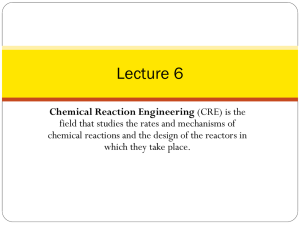

It was suggested early on that graphic matroids might be a more tractable special case. Polymath would make more sense? Graphic Matroids Polymath was used for the first project, but maybe R. Incidentally, if a paper is published by Polymath 12, what pseudonym should be used? I know that D. If the gap can be closed then in my opinion this would be a publishable short paper. There is hope that this gap could be closed. One of the nicest things to come out Polymath 12, in my opinion, has been a partial answer to this question: It is somewhere between n/3 + c and n/2 + c. Online Version of Conjectureįor general matroids, the online version of Rota’s Basis Conjecture is false, but it is still interesting to ask how many bases are achievable. Let me take this opportunity to describe some of the leads that I think are most promising. However, I don’t want to turn out the lights just yet, because I don’t believe we’re actually stuck. The project has lost some of its initial momentum, perhaps because other priorities have intruded into the lives of the main participants (I know that this is true of myself). We haven’t quite hit the 100-comment mark on the second Polymath 12 blog post, but this seems like a good moment to take stock. simpler graphs may lead to insights into what properties such graphs will always/usually have, which might inspire strategies for seeking 6-chromatic examples, improved bounds to the analogous problem in higher dimensions, etc.it entails a rich interaction between theory and computation.being graph theory, it’s nicely accessible/seductive to non-specialists.I feel that a number of features make this nice for Polymath: An example might be defined as simpler if it has fewer vertices, or if it has a smaller largest subgraph whose -colourability must be checked directly, etc. I’m therefore wondering whether a search for “simpler” examples might work as a Polymath project. However, the smallest such graph that I have so far discovered has vertices, and its lack of a -colouring requires checking for the nonexistence of a particular category of -colourings of subgraphs of it that have and vertices, which obviously requires a computer search. graphs that can be embedded in the plane with all edges being straight lines of length. In a recent preprint, I have now excluded the case by identifying a family of non-colourable finite “unit-distance” graphs, i.e. It was first posed in 1950 and the bounds were rapidly demonstrated, but no further progress has since been made. The Hadwiger-Nelson problem is that of determining the chromatic number of the plane ( ), defined as the minimum number of colours that can be assigned to the points of the plane so as to prevent any two points unit distance apart from being the same colour. I took some pictures which are a little similar to our logo picture (last picture below). A lot of interesting developments and ideas in various directions! The polymath picture Polymath 16 of the chromatic number of the plane is in its eleventh post. Here is a subsequent paper about the more general Kahn’s conjecture Our results also apply to the more general setting of matroids.Įarlier the best result was giving disjoint transversal bases. In this paper we prove that one can always find $\left(1/2-o\left(1\right)\right)n$ disjoint transversal bases, improving on the previous best bound of $\Omega\left(n/\log n\right)$. Rota’s basis conjecture remains wide open despite its apparent simplicity and the efforts of many researchers (for example, the conjecture was recently the subject of the collaborative “Polymath” project). Given $n$ bases $B_$ (we call such bases transversal bases). Halfway to Rota’s basis conjecture, by Matija Bucić, Matthew Kwan, Alexey Pokrovskiy, and Benny SudakovĪbstract: In 1989, Rota made the following conjecture. Three short items: Progress on Rota’s conjecture (polymath12) by Bucić, Kwan, Pokrovskiy, and Sudakovįirst, there is a remarkable development on Rota’s basis conjecture ( Polymath12) described in the paper


 0 kommentar(er)
0 kommentar(er)
